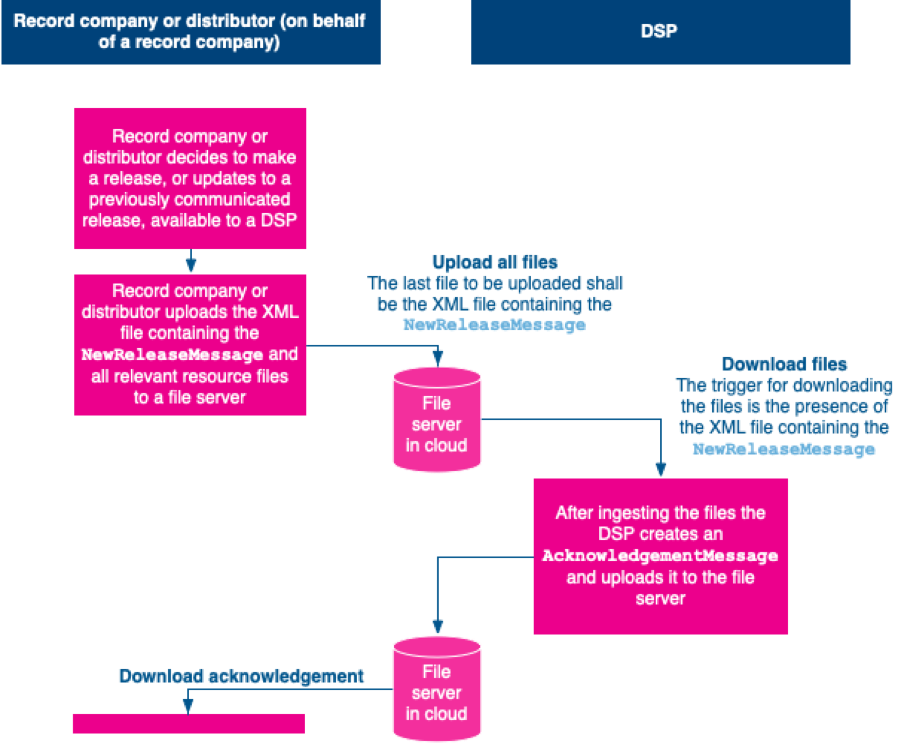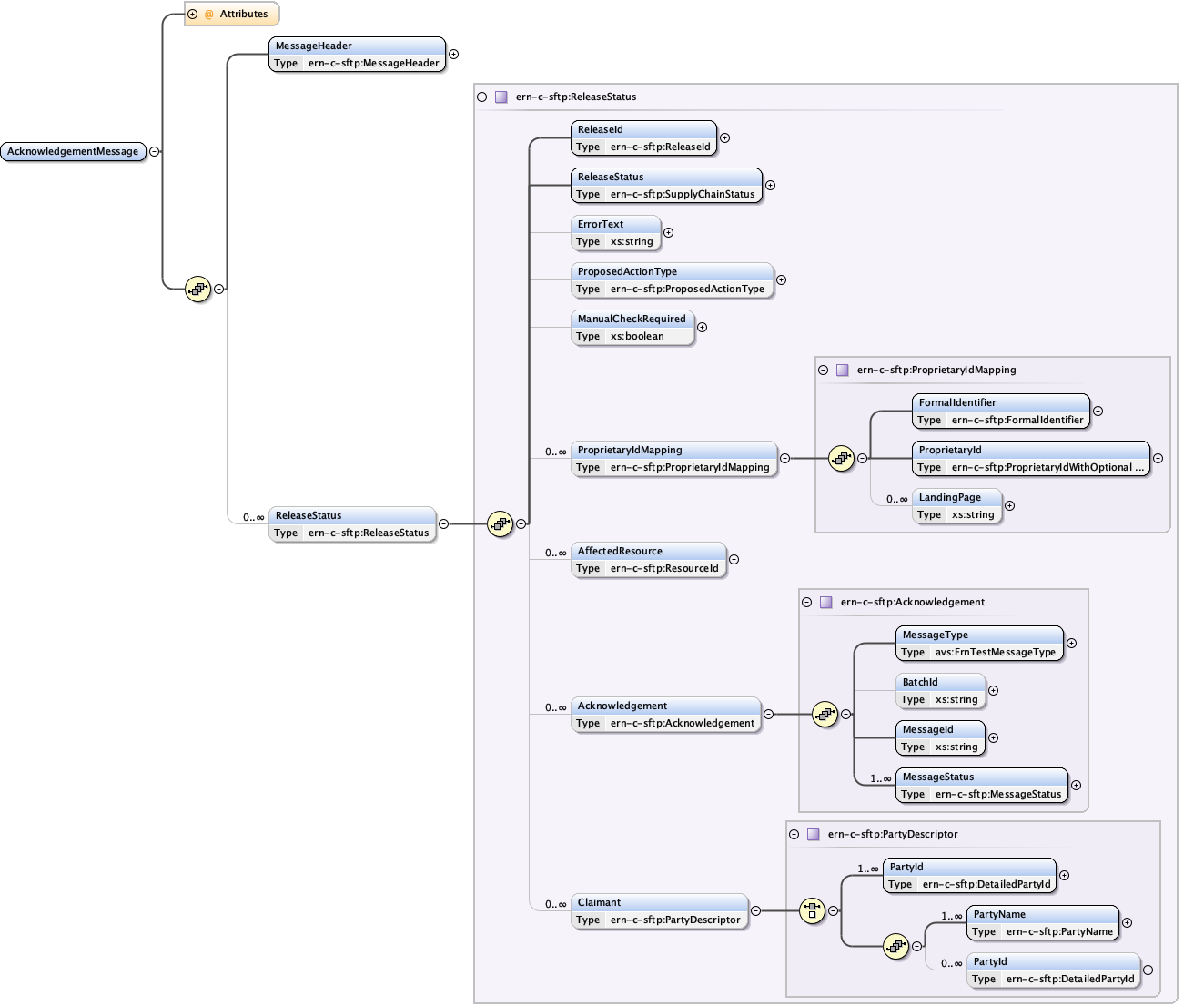5.1 Choreography
This clause defines the mechanism by which a record company or distributor can communicate metadata about a release and the resource files that make up that release, one release at a time, to a DSP using:
A cloud-based storage server that is hosted by the record company or distributor;
A cloud-based storage server that is hosted by the DSP; or
A cloud-based storage server that is hosted by a third party.
This Part of the ERN standard does not therefore define on whose hardware the files are being stored as this is determined by the bilateral agreement between the record company or distributor and the DSP.
The choreography of the release-by-release profile is as depicted in the diagram in Figure 1 below.
Figure 1 – Release-by-Release Choreography
The record company or distributor and the DSP are responsible to ensuring that the communication is secure.
The NewReleaseMessage referenced in Figure 1 is defined in the latest version of Part 1: Definition of Messages of the Electronic Release Notification Message Suite. If the record company or distributor only wishes to communicate a small subset of the types of releases that can be communicated using the NewReleaseMessage, the structure of the message that should be used for such subsets is defined, depending on the type of the release, in Part 2: Release Profiles Version 2.3.1 of the ERN standard.
The structure of the AcknowledgementMessage referenced in Figure 1 is set out in the diagram in Figure 2 below:
Figure 2 – Structure of AcknowledgementMessage
The server organisation and file naming conventions for the release-by-release profile are defined in Clauses 5.2 and 5.3 below.
This part of the ERN standard does not define when the record company or distributor shall start or finish uploading a NewReleaseMessage and all the associated resource files. Equally, this part of the ERN standard does not define when the DSP shall start or finish its downloading of the NewReleaseMessage and resource files.
In addition to the exchange shown in the diagram in Figure 1 above, and if after the DSP's message ingestion the DSP has sent an AcknowledgementMessage reporting FileOK, but closer inspection shows deficiencies that were not detected previously, the DSP may use the AcknowledgementMessage to communicate different status information.
The recipient of the AcknowledgementMessage may remove the AcknowledgementMessage from the file server after an appropriate and mutually agreed period of time. Absent a mutually agreed period of time, the default period is one month.

